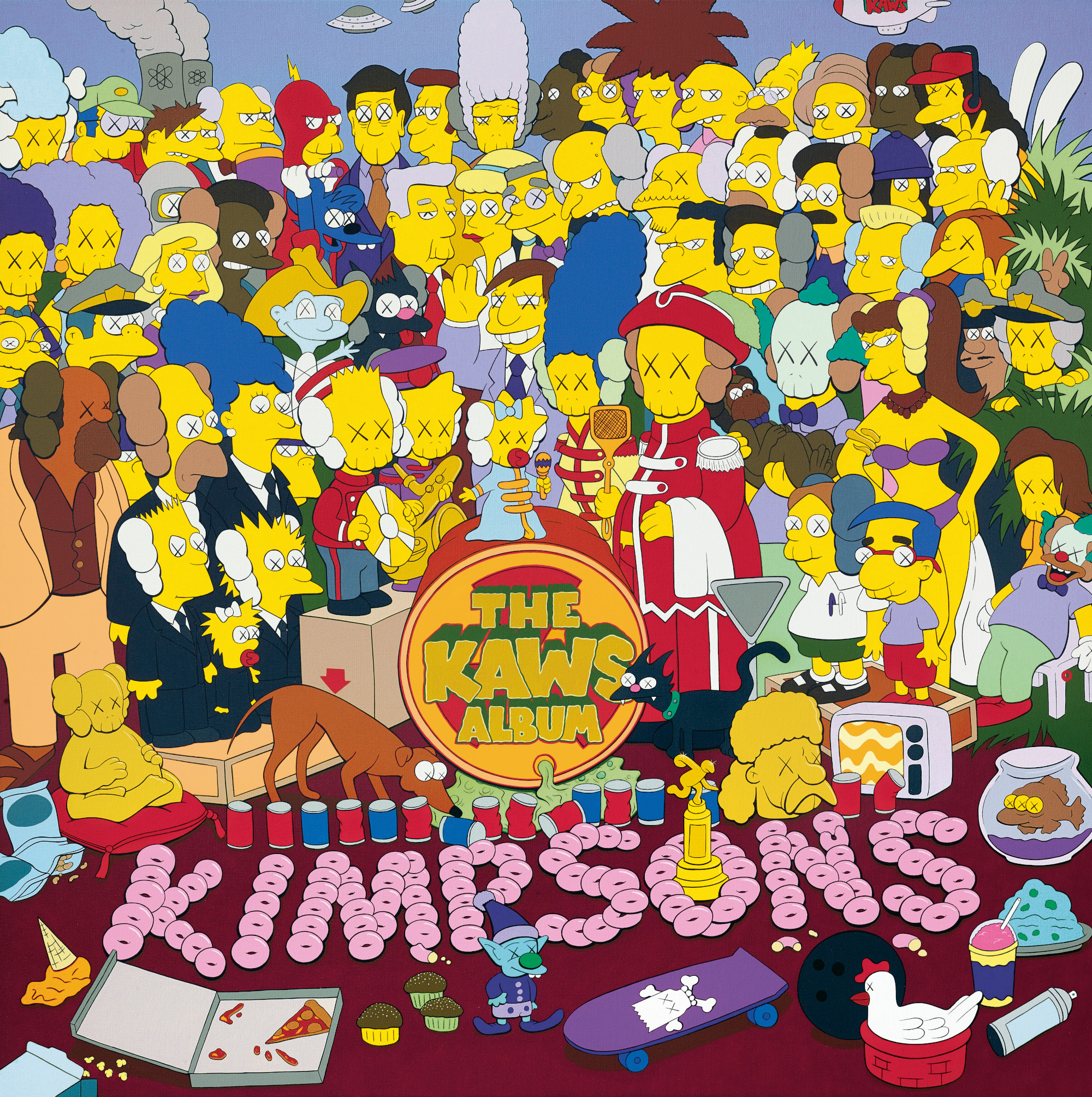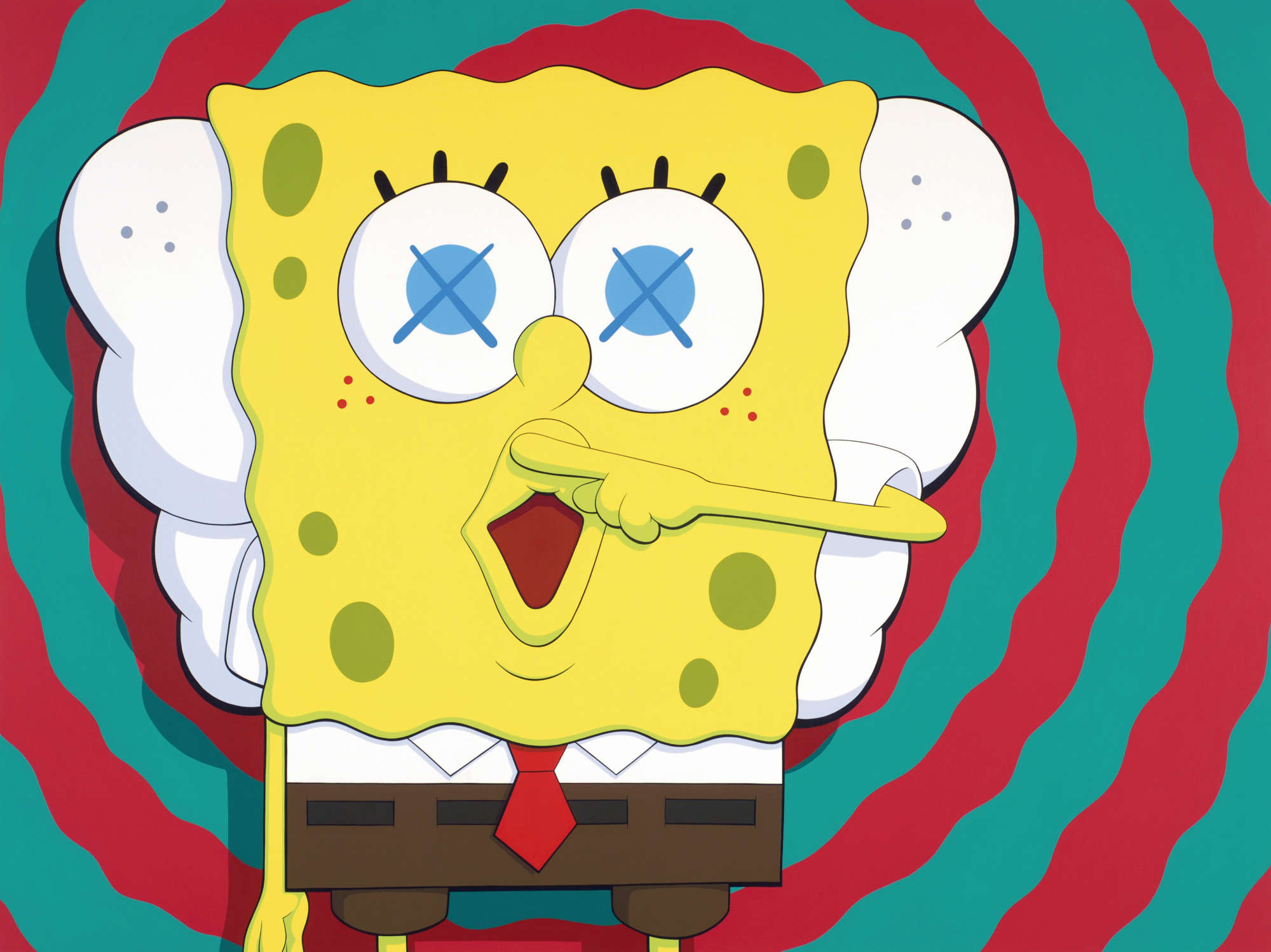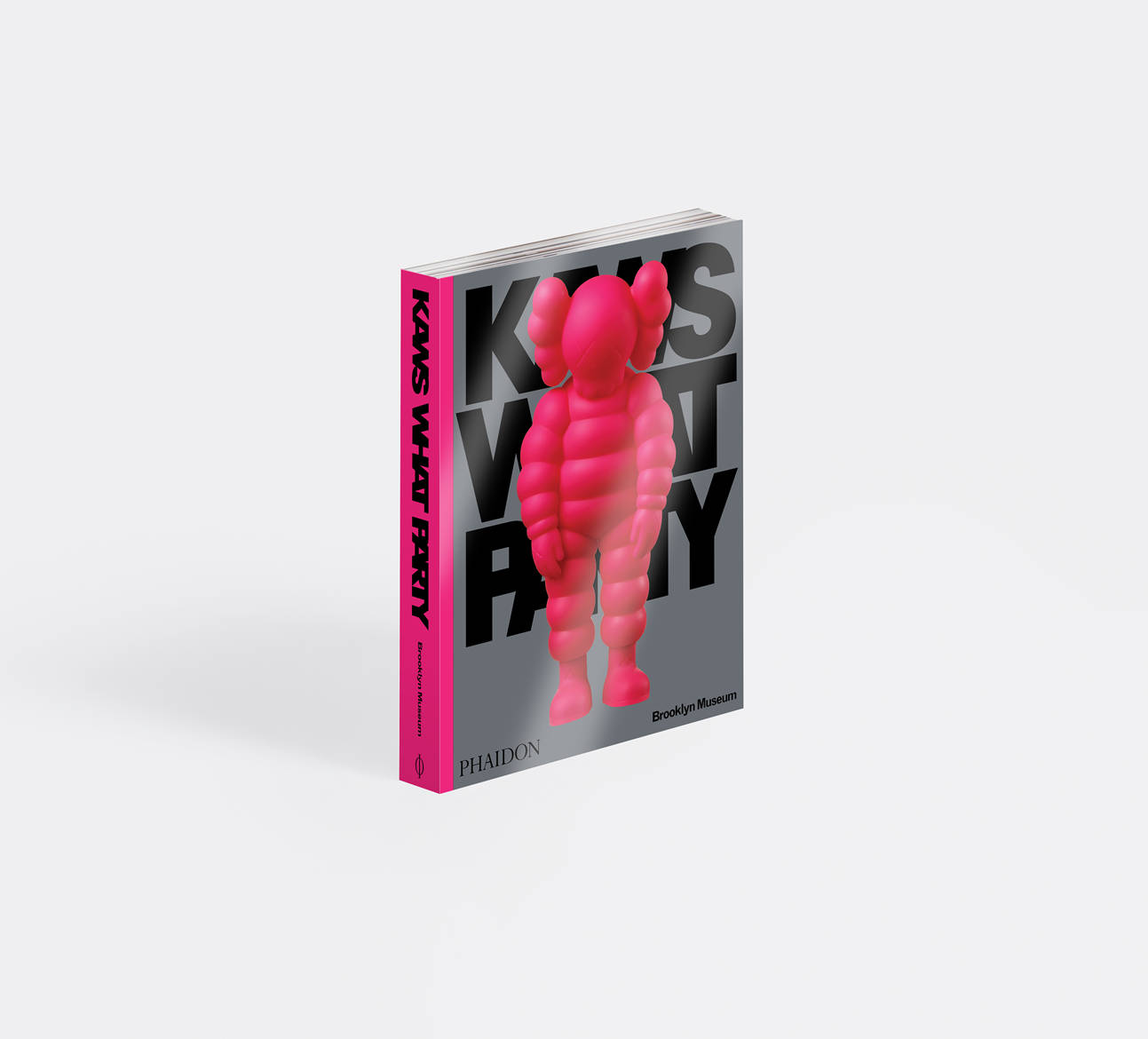
Homer Simpson, KAWS and the cartoon mind
An early trip to Japan led the artist to reassess and reintegrate American cartoon culture into his practice
In 1997, the year after he graduated from The School of Visual Arts in New York, KAWS took a trip to Japan. A fellow graffiti artist introduced KAWS to a number of key figures within Japanese youth culture, including Tomoaki “Nigo” Nagao, the man behind the clothing label A Bathing Ape, and Hikaru Iwanaga, founder of the toy-design company Bounty Hunter.
KAWS (born Brian Donnelly in New Jersey in 1974) appreciated his newfound friends during that trip, but he also “embraced the culture of collectible toys, a Japanese subculture comparable to skateboarding or graffiti and related to the subculture of otaku, people obsessed with Japanese cartoon culture, including manga and anime,” explains the Brooklyn Museum's curator Eugenie Tsai in our new book KAWS: WHAT PARTY.
KAWS couldn’t speak Japanese, and had some difficulty making himself understood. Nevertheless, there were certain non-verbal cues that he totally took to heart. “In shops in Tokyo he noted the ubiquity of merchandise featuring characters from The Simpsons, an American cartoon series named after a fictional family that began to air in 1989,” writes Tsai. “Referring to the father figure, KAWS observed: "It’s ‘You know Homer, I know Homer'. We might not be able to have a meaningful conversation, but to all of us, it’s still Homer.”
KAWS had been employed at a commercial animation studio for a short period back in America, and knew how to create these characters. Now, as a fine artist, he continued that meaningful dialogue in his work, Tsai notes. “In their altered versions, The Simpsons family members and friends appeared in a number of canvases from 2001 through 2005, in various situations ranging from the domestic to the theatrical,” the curator writes. “Nigo commissioned KAWS to make individual paintings of characters from The Simpsons for his restaurant, BAPE CAFÉ!?, resulting in nearly fifty paintings. This included a larger painting, THE KAWS ALBUM, based on the cover of The Yellow Album, the Simpsons’ second album of songs, from 1998, which in turn played off the Beatles’ legendary album cover for Sgt. Pepper’s Lonely Hearts Club Band, from 1967, considered one of the first realizations of the growing movement to bridge the divide between popular culture and critical art practice.”
In the spring of 2019, that painting sold for $14.8 million at Sotheby’s in Hong Kong, fourteen times its high estimate. The auction greatly increased KAWS’ visibility in the art world. Some argue that KAWS’s appropriation of the Simpsons characters, alongside others, such as Snoopy, the Smurfs and SpongeBob SquarePants, is artstitic theft, plain and simple. Others, however, laud his pop appropriation.

“The visual codes of an entire civilization may sound like too grand an expression,” writes the curator and critic, Daniel Birnbaum. “But which other artist today has created a comparable universe of figures that in condensed form comprise recognizable elements usurped from the defining icons of American pop culture, from Mickey Mouse and Peanuts to SpongeBob Square-Pants and the Simpsons? It’s as if all of America, or more precisely what has been called the nation’s ‘cartoon mind,’ has been compressed into a few characters that the artist has modified and fragmented to create his own pictorial lexicon.”

To gain a better understanding of that cartoon mind, as well as much more, order a copy of KAWS: WHAT PARTY. The new book, which accompanies the artist's sold-out show, is available in a range of KAWS-collaborative colours; take a look at the pink edition here; the yellow edition here; the black edition here; and the orange edition here. No matter which one you pick, KAWS: WHAT PARTY will unlock access to a compelling new field within contemporary culture, pioneered by one of the most important artists of our time.
